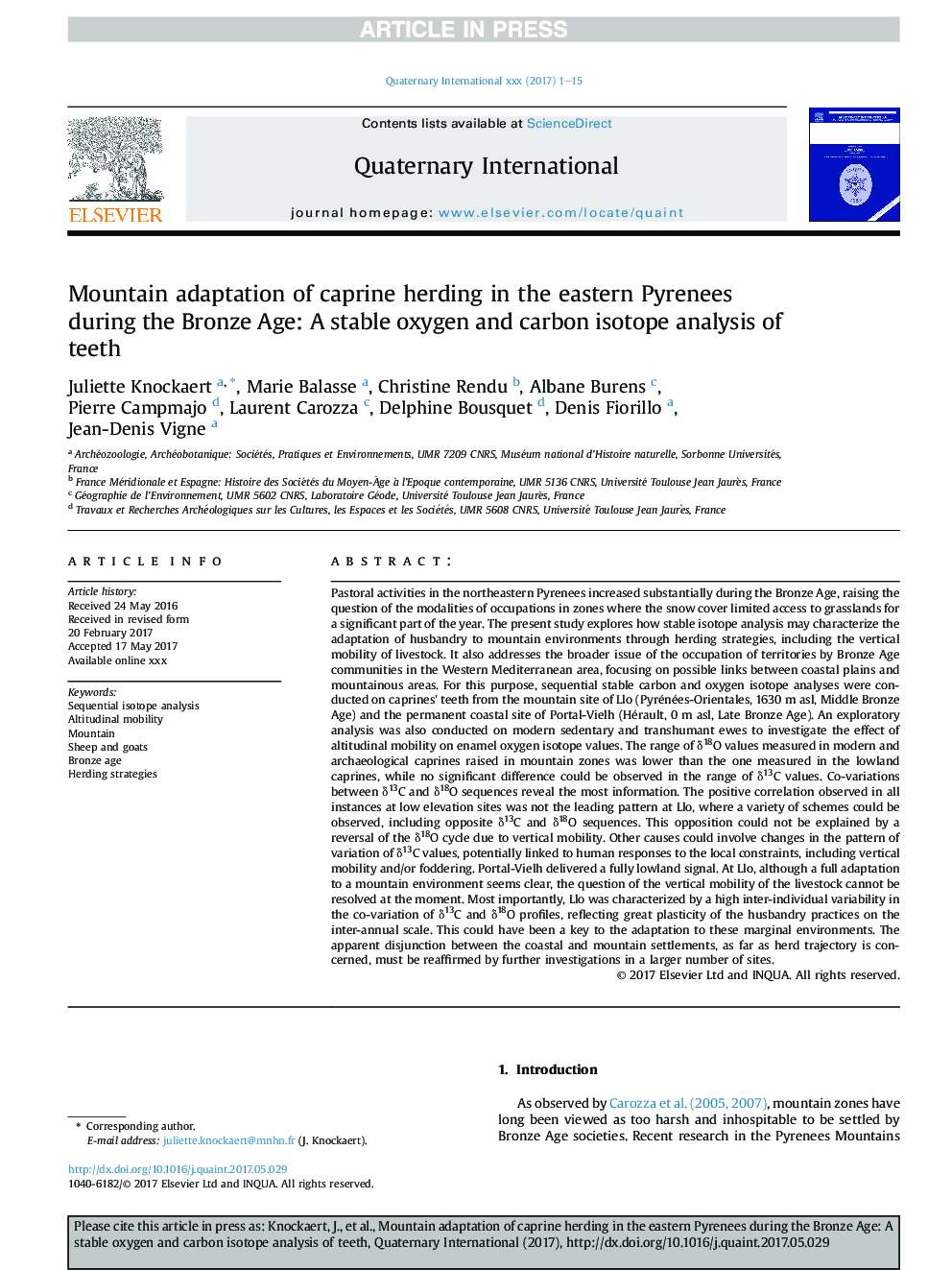| کد مقاله | کد نشریه | سال انتشار | مقاله انگلیسی | نسخه تمام متن |
|---|---|---|---|---|
| 7449052 | 1484027 | 2018 | 15 صفحه PDF | دانلود رایگان |
عنوان انگلیسی مقاله ISI
Mountain adaptation of caprine herding in the eastern Pyrenees during the Bronze Age: A stable oxygen and carbon isotope analysis of teeth
ترجمه فارسی عنوان
سازگاری کوهی از گاو کبدی در پیرنه های شرقی در طول دوره برنز: تجزیه و تحلیل ایزوتوپ اکسیژن و کربن دقیق
دانلود مقاله + سفارش ترجمه
دانلود مقاله ISI انگلیسی
رایگان برای ایرانیان
کلمات کلیدی
تجزیه و تحلیل ایزوتوپ متوالی، تحرک بالا کوه، گوسفند و بز سن برنز، استراتژی های کشتار،
موضوعات مرتبط
مهندسی و علوم پایه
علوم زمین و سیارات
زمین شناسی
چکیده انگلیسی
Pastoral activities in the northeastern Pyrenees increased substantially during the Bronze Age, raising the question of the modalities of occupations in zones where the snow cover limited access to grasslands for a significant part of the year. The present study explores how stable isotope analysis may characterize the adaptation of husbandry to mountain environments through herding strategies, including the vertical mobility of livestock. It also addresses the broader issue of the occupation of territories by Bronze Age communities in the Western Mediterranean area, focusing on possible links between coastal plains and mountainous areas. For this purpose, sequential stable carbon and oxygen isotope analyses were conducted on caprines' teeth from the mountain site of Llo (Pyrénées-Orientales, 1630 m asl, Middle Bronze Age) and the permanent coastal site of Portal-Vielh (Hérault, 0 m asl, Late Bronze Age). An exploratory analysis was also conducted on modern sedentary and transhumant ewes to investigate the effect of altitudinal mobility on enamel oxygen isotope values. The range of δ18O values measured in modern and archaeological caprines raised in mountain zones was lower than the one measured in the lowland caprines, while no significant difference could be observed in the range of δ13C values. Co-variations between δ13C and δ18O sequences reveal the most information. The positive correlation observed in all instances at low elevation sites was not the leading pattern at Llo, where a variety of schemes could be observed, including opposite δ13C and δ18O sequences. This opposition could not be explained by a reversal of the δ18O cycle due to vertical mobility. Other causes could involve changes in the pattern of variation of δ13C values, potentially linked to human responses to the local constraints, including vertical mobility and/or foddering. Portal-Vielh delivered a fully lowland signal. At Llo, although a full adaptation to a mountain environment seems clear, the question of the vertical mobility of the livestock cannot be resolved at the moment. Most importantly, Llo was characterized by a high inter-individual variability in the co-variation of δ13C and δ18O profiles, reflecting great plasticity of the husbandry practices on the inter-annual scale. This could have been a key to the adaptation to these marginal environments. The apparent disjunction between the coastal and mountain settlements, as far as herd trajectory is concerned, must be reaffirmed by further investigations in a larger number of sites.
ناشر
Database: Elsevier - ScienceDirect (ساینس دایرکت)
Journal: Quaternary International - Volume 484, 10 August 2018, Pages 60-74
Journal: Quaternary International - Volume 484, 10 August 2018, Pages 60-74
نویسندگان
Juliette Knockaert, Marie Balasse, Christine Rendu, Albane Burens, Pierre Campmajo, Laurent Carozza, Delphine Bousquet, Denis Fiorillo, Jean-Denis Vigne,
